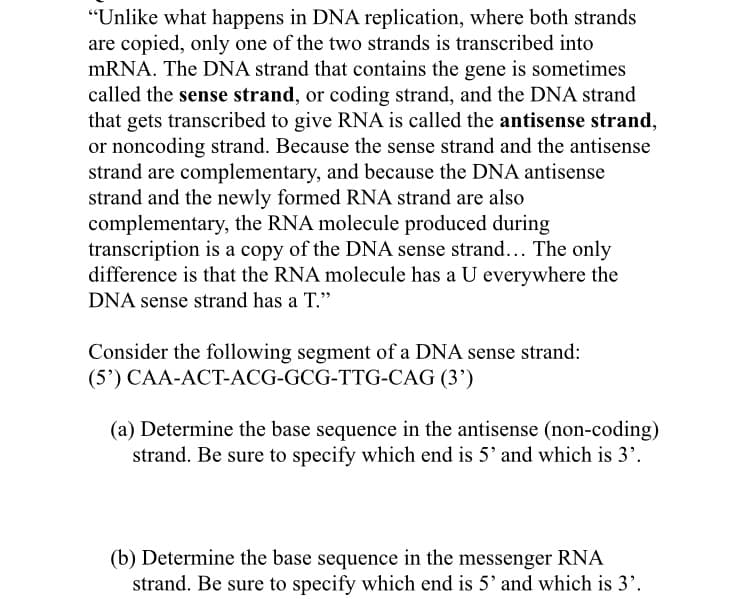Consider the following segment of a DNA sense strand: (5') CAA-ACT-ACG-GCG-TTG-CAG (3') (a) Determine the base sequence in the antisense (non-coding) strand. Be sure to specify which end is 5' and which is 3'. (b) Determine the base sequence in the messenger RNA strand. Be sure to specify which end is 5' and which is 3'.
Coding Strand of DNA
When pointing to DNA transcription, the coding strand is found to be the DNA strand whose base sequence is indistinguishable from the base sequence of the RNA transcript developed. It is this strand that comprises the codons, while the non-coding strand comprises the anti-codons.
Nucleotide
Both DNA and RNA are composed of organic molecules known as nucleotides. Hence, nucleotides are known as the basic building blocks of nucleic acids. These substances play a role in various processes such as cell signalling, enzyme reactions, metabolism, and so on.
Structure of Cytosine
Cytosine is among the five primary nitrogenous bases of which DNA and RNA and are being used in storage and transportation of genetic makeup within a cell. Adenine, guanine, thymine as well as uracil are the remaining four nucleobases.

Step by step
Solved in 3 steps






